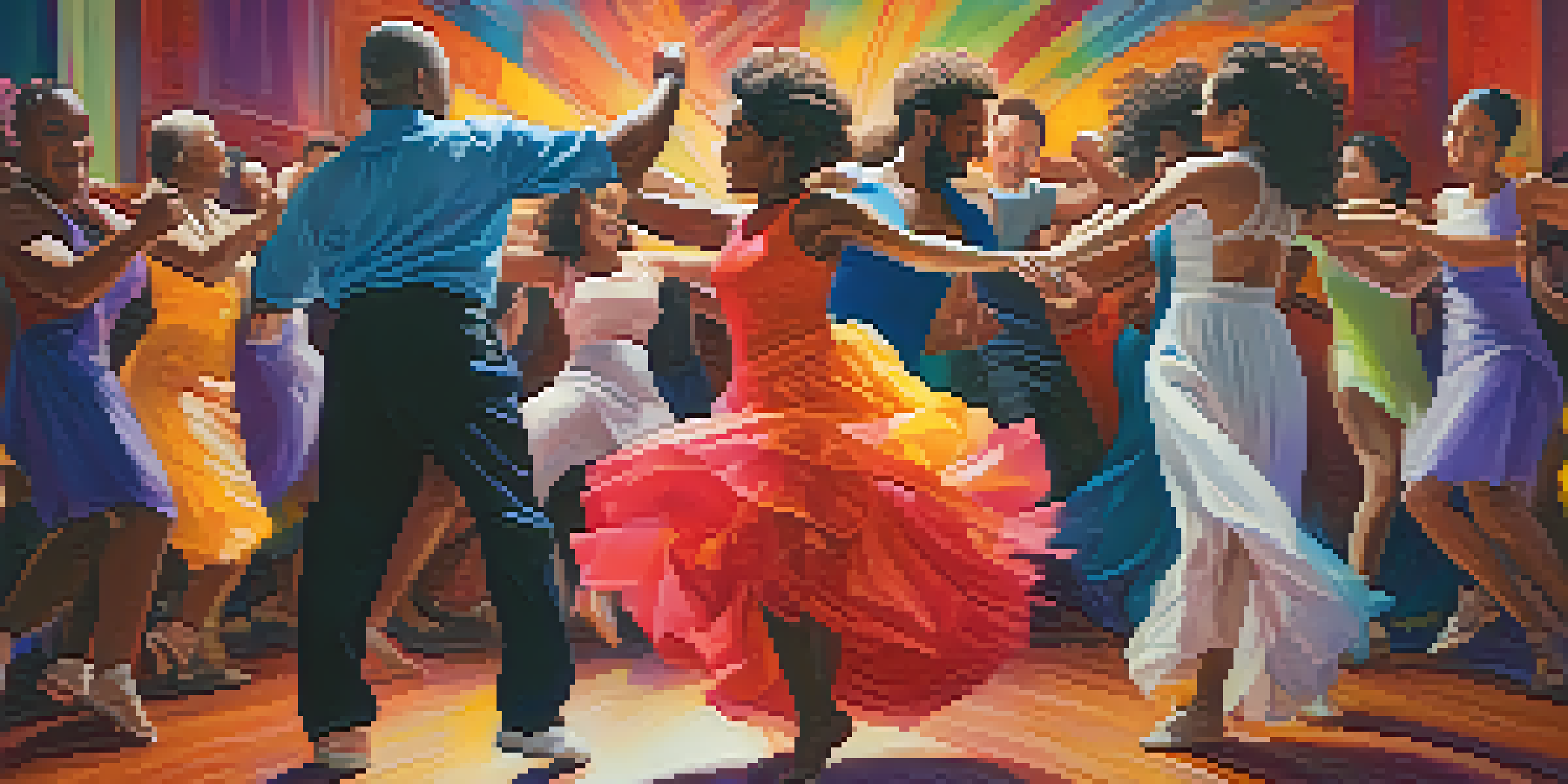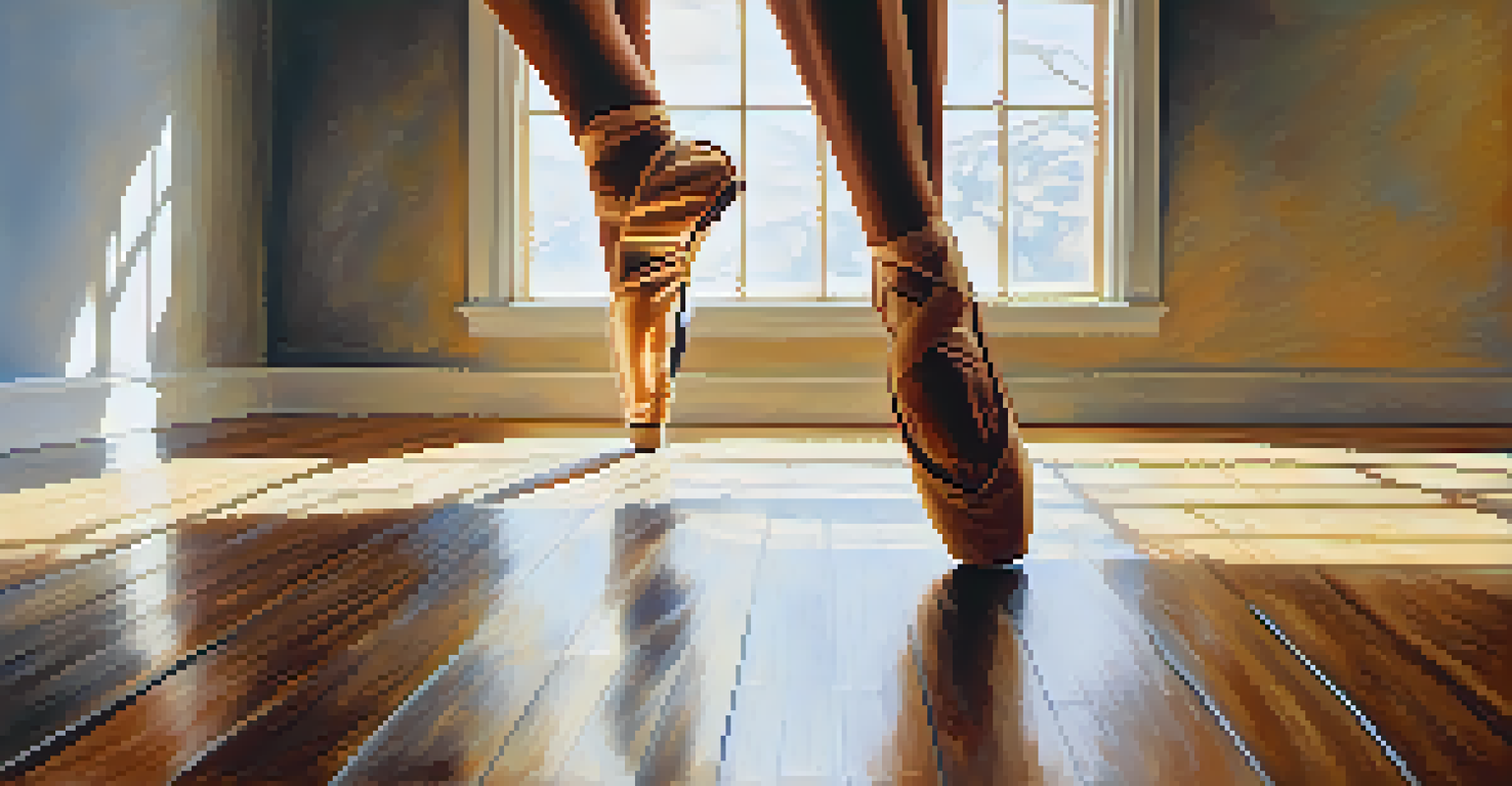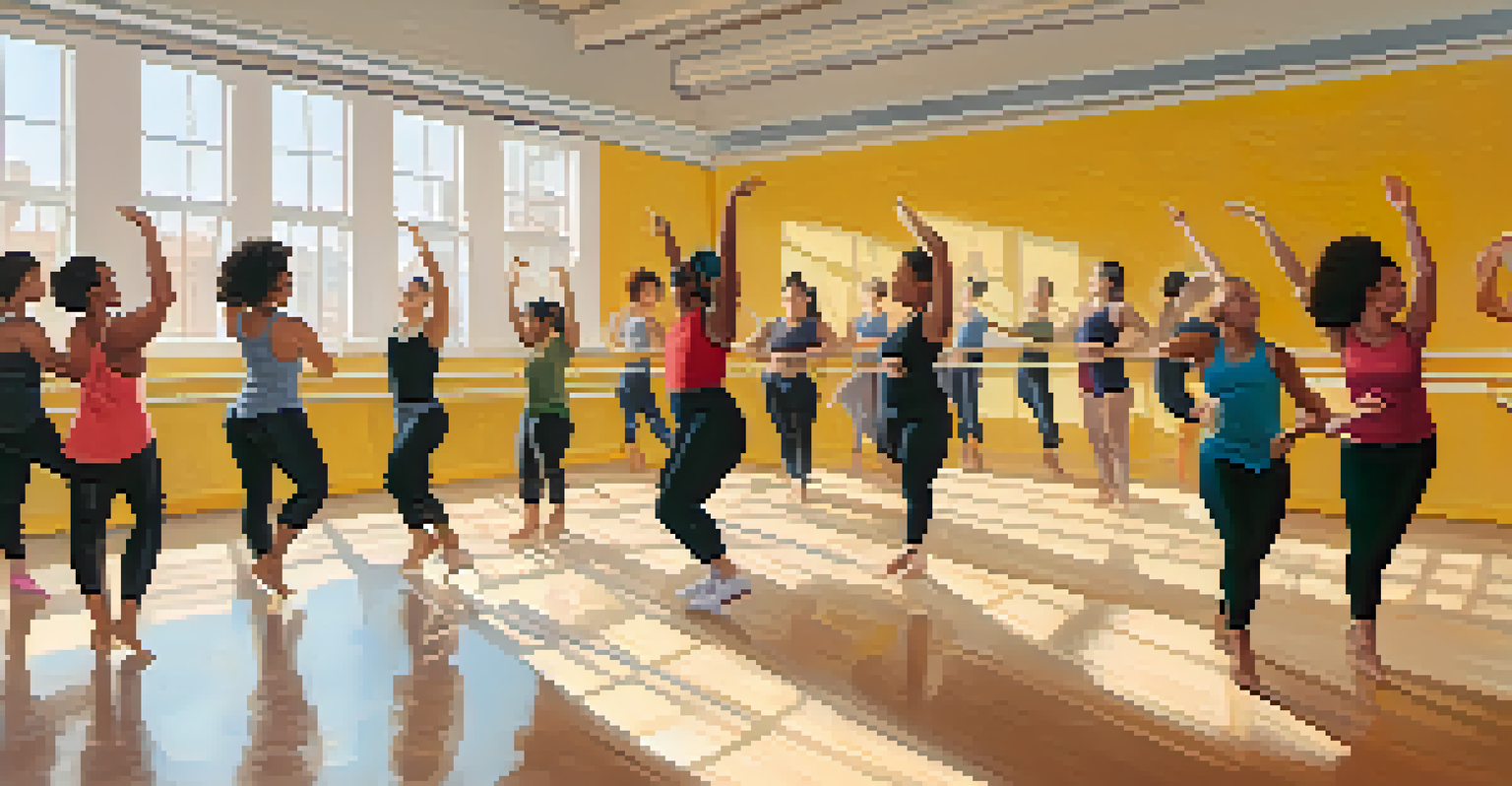Dance and Body Positivity: Embracing Individuality

The Joy of Dance: A Universal Language
Dance is often described as a universal language, transcending barriers and connecting people through movement. No matter your background, age, or body type, dance invites everyone to express themselves freely. This inclusivity is essential in promoting body positivity, as it encourages individuals to celebrate their unique forms and abilities.
Dance is the hidden language of the soul.
As you step onto the dance floor, the rhythm can awaken a sense of joy and freedom within. Each movement becomes a celebration of who you are, allowing you to embrace your individuality. Just like finger painting in childhood, dance lets you express yourself without fear of judgment.
When we dance, we let go of inhibitions and societal expectations about body image. Instead, we find empowerment in our movements, acknowledging that every body is capable of expressing joy and creativity through dance.
Body Positivity: Redefining Beauty Standards
Body positivity is about embracing all shapes, sizes, and abilities. In the world of dance, this movement is crucial as it challenges the narrow definitions of beauty that often dominate the industry. Dancers of all body types are proving that talent and passion are what truly matter.

By showcasing diverse bodies on stage and in dance studios, we can redefine what it means to be beautiful. This shift encourages dancers to appreciate their own bodies and to view them as instruments of expression rather than objects of scrutiny. The focus moves from appearance to the joy of movement itself.
Dance Celebrates Body Positivity
Dance promotes inclusivity by encouraging individuals of all shapes and sizes to embrace their unique bodies and express themselves freely.
As we celebrate different body types, we create a more inclusive environment for everyone. This fosters a sense of belonging, allowing dancers to feel valued for who they are, not just how they look.
The Therapeutic Power of Dance
Dance is not just an art form; it also serves as a powerful therapeutic tool. Engaging in movement can help individuals reconnect with their bodies, fostering self-acceptance and healing. Many find that dance offers a safe space to express emotions and release stress.
The body says what words cannot.
For those struggling with body image issues, dance can be liberating. The act of moving to music allows for a deeper understanding and appreciation of one's own body, promoting self-love and acceptance. It's like a gentle reminder that our bodies are capable of so much more than we often realize.
Moreover, dance encourages mindfulness, as it requires focus and presence. This practice can help individuals become more attuned to their bodies, enhancing their overall well-being and reinforcing positive self-image.
Community and Connection Through Dance
Dance has an innate ability to bring people together. Whether you're in a dance class, a community event, or a social gathering, the shared experience of moving together fosters a sense of belonging. This communal aspect is vital for building confidence and promoting body positivity.
When we dance in groups, we learn to appreciate each other's unique movements and styles. This diversity enhances our understanding of beauty, as we see that everyone adds their flavor to the dance floor. It’s a reminder that our differences make us stronger and more vibrant.
Therapeutic Benefits of Dance
Engaging in dance fosters self-acceptance and emotional healing, helping individuals to reconnect with their bodies and promote positive self-image.
Additionally, connecting with others through dance can help individuals feel less isolated in their body image struggles. The support from a community can empower and uplift, reinforcing the message that everyone is worthy of love and acceptance.
Self-Expression: Dance as a Personal Journey
For many, dance is a deeply personal form of self-expression. It provides an outlet to communicate feelings that words sometimes cannot capture. Through movement, individuals can explore their identities and share their stories in a way that feels authentic.
Each dance style offers its own unique means of expression, allowing individuals to find what resonates with them. Whether it's the fluidity of contemporary dance or the rhythm of hip-hop, discovering a style that feels right can be transformative. It’s about finding your voice and expressing it through movement.
This journey of self-discovery is empowering and fosters a sense of agency over one's body. Dance becomes a celebration of individuality, encouraging people to embrace their quirks and differences rather than conforming to societal standards.
The Role of Dance Education in Body Positivity
Dance education plays a crucial role in fostering a culture of body positivity. By teaching students to appreciate all body types and abilities, instructors can create an environment that values individuality. This foundation is essential for nurturing confident dancers who feel comfortable in their skin.
Incorporating discussions about body image and self-acceptance into dance curriculums can further enhance this environment. Educators can encourage open conversations about the pressures of society and promote the idea that every body is capable of beautiful movement.
Community Builds Confidence
Dancing in groups fosters a sense of belonging and connection, empowering individuals to feel valued and supported in their body image journeys.
Moreover, supporting diverse representations in dance education materials can help students see themselves reflected in the art form. This visibility is vital for inspiring the next generation of dancers to embrace their uniqueness and dance with pride.
Moving Forward: The Future of Dance and Body Positivity
As we look to the future, the conversation around dance and body positivity continues to evolve. More artists and organizations are advocating for inclusivity, ensuring that dance is accessible to everyone, regardless of their body type or ability. This shift is crucial for fostering a more accepting culture within the dance community.
Social media also plays a significant role in this movement, allowing diverse dancers to share their stories and inspire others. Platforms like Instagram and TikTok have become avenues for celebrating body positivity and showcasing the beauty of varied dance styles. The more we see different bodies in dance, the more normalized it becomes.

Ultimately, embracing individuality through dance is about creating a world where everyone feels empowered to express themselves. By continuing to advocate for body positivity, we can cultivate a dance culture that celebrates all forms of expression and inspires future generations to find joy in movement.